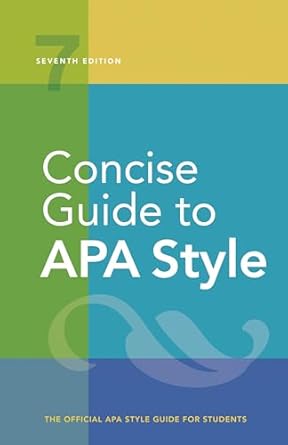[toc]
intext citations apa style guide avoiding ambiguity
Concise Guide to APA Style: 7th Edition (OFFICIAL)
Page 212 Review
Understanding In-Text Citations: A Comprehensive Guide
This excerpt from an ebook provides a concise yet thorough explanation of in-text citations, particularly focusing on APA style guidelines.
Let’s delve into the key aspects discussed.
Basic In-Text Citation Styles
The excerpt begins by outlining the basic formats for in-text citations based on the number of authors.
The following table summarizes these styles:
Table 8.1 Basic In-Text Citation Styles
Author type | Parenthetical citation | Narrative citation
One author | (Luna, 2020) | Luna (2020)
Two authors | (Salas & D’Agostino, 2020) | Salas and D’Agostino (2020)
Three or more authors | (Martin et al., 2020) | Martin et al. (2020)
Group author with abbreviation | First citation | (National Institute of Mental Health [NIMH], 2020) | National Institute of Mental Health (NIMH, 2020)
Subsequent citations | (NIMH, 2020) | NIMH (2020)
Group author without abbreviation | (Stanford University, 2020) | Stanford University (2020)
The text emphasizes the importance of defining abbreviations for group authors only once, then consistently using the abbreviation thereafter.
As stated, “Define the abbreviation for a group author only once in the text, choosing either the parenthetical or the narrative format.
Thereafter, use the abbreviation for all mentions of the group in the text (see Section 8.21).”
Avoiding Ambiguity in In-Text Citations
A significant portion of the excerpt focuses on addressing potential ambiguity when citing multiple works with three or more authors that shorten to the same in-text citation.
The excerpt highlights that ambiguity can occur when multiple works with three or more authors and the same publication year can be shortened to the same in-text citation form.
To resolve this, the excerpt suggests a specific approach:
“To avoid ambiguity, when the in-text citations of multiple works with three or more authors shorten to the same form, write out as many names as needed to distinguish the references, and abbreviate the rest of the names to “et al.” in every citation.”
This principle is illustrated with a detailed example:
“For example, two works have the following authors:
Kapoor, Bloom, Montez, Warner, and Hill (2017)
Kapoor, Bloom, Zucker, Tang, Koroglu, Enfant, Kim, and Daly (2017)
Both these citations shorten to Kapoor et al. (2017).
To avoid ambiguity when citing them both in your paper, cite them as follows:
Kapoor, Bloom, Montez, et al. (2017)
Kapoor, Bloom, Zucker, et al. (2017)”
The excerpt also explains the use of “et al.” noting that, “Because ‘et al.’ is plural (meaning ‘and others’), it cannot stand for only one name.
When only the final author is different, spell out all names in every citation.”
Another example is given to illustrate this point:
“Hasan, Liang, Kahn, and Jones-Miller (2015)
Hasan, Liang, Kahn, and Weintraub (2015)”
Key Takeaways
In summary, this excerpt serves as a valuable guide to understanding and implementing in-text citations correctly.
The key takeaways are:
* **Follow the Basic Styles:** Adhere to the specific format based on the number of authors, distinguishing between parenthetical and narrative citations.
* **Address Ambiguity:** If multiple sources shorten to the same in-text citation, include enough author names to differentiate them.
* **Use ‘et al.’ Appropriately:** Use ‘et al.’ only when referring to more than one omitted author, and spell out all names when only the last author differs.
By following these guidelines, writers can ensure the accuracy and clarity of their citations, enhancing the credibility and readability of their work.
Buy full ebook for only $18: https://www.lulu.com/shop/american-psychological-association/concise-guide-to-apa-style-7th-edition-official/ebook/product-rmzpq54.html?page=1&pageSize=4
Intext Citations Apa Style Guide Avoiding Ambiguity
Read more: Understanding Gender Identity: Key Definitions & Insights

